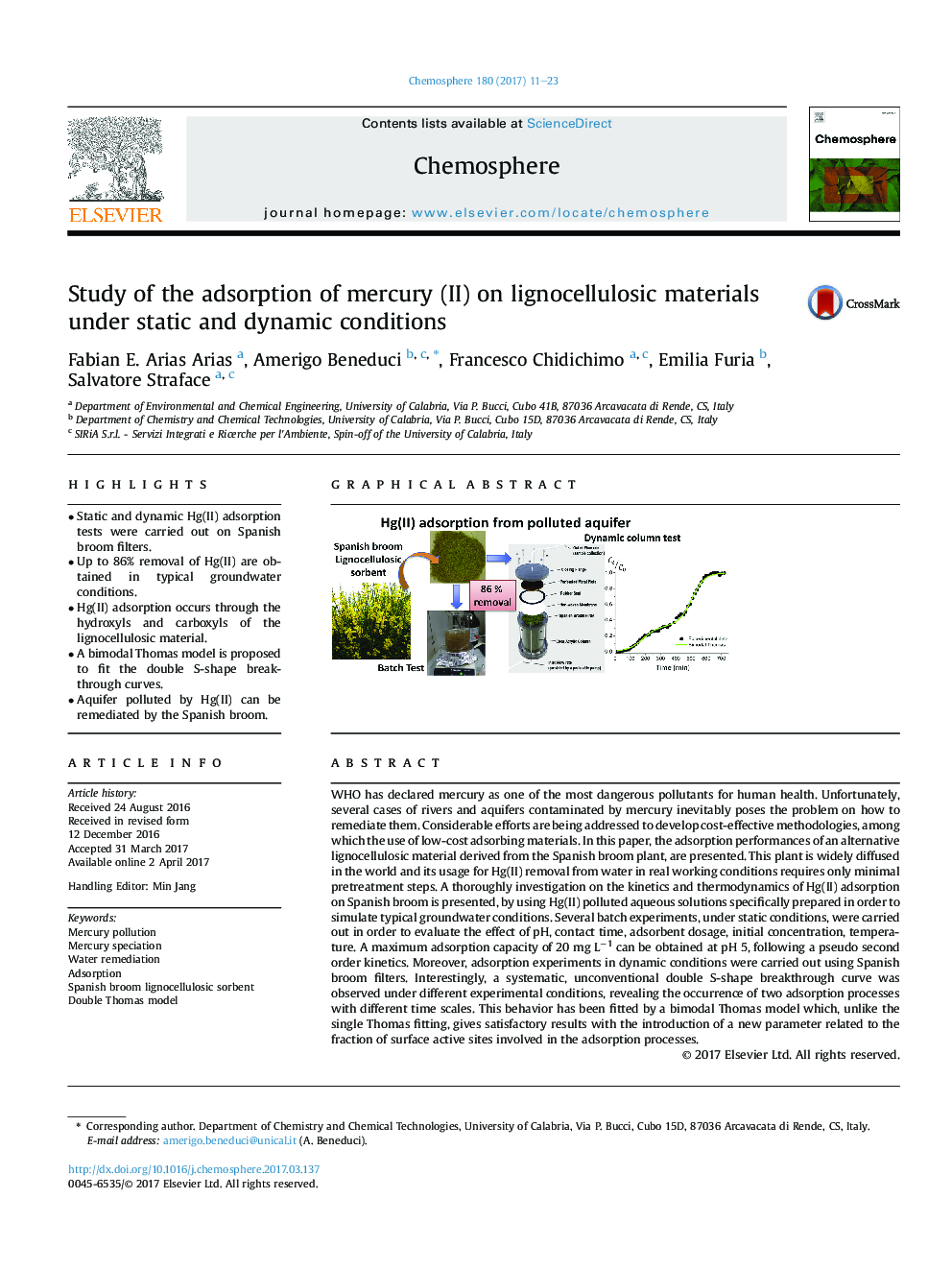| Article ID | Journal | Published Year | Pages | File Type |
|---|---|---|---|---|
| 5746155 | Chemosphere | 2017 | 13 Pages |
â¢Static and dynamic Hg(II) adsorption tests were carried out on Spanish broom filters.â¢Up to 86% removal of Hg(II) are obtained in typical groundwater conditions.â¢Hg(II) adsorption occurs through the hydroxyls and carboxyls of the lignocellulosic material.â¢A bimodal Thomas model is proposed to fit the double S-shape breakthrough curves.â¢Aquifer polluted by Hg(II) can be remediated by the Spanish broom.
WHO has declared mercury as one of the most dangerous pollutants for human health. Unfortunately, several cases of rivers and aquifers contaminated by mercury inevitably poses the problem on how to remediate them. Considerable efforts are being addressed to develop cost-effective methodologies, among which the use of low-cost adsorbing materials. In this paper, the adsorption performances of an alternative lignocellulosic material derived from the Spanish broom plant, are presented. This plant is widely diffused in the world and its usage for Hg(II) removal from water in real working conditions requires only minimal pretreatment steps. A thoroughly investigation on the kinetics and thermodynamics of Hg(II) adsorption on Spanish broom is presented, by using Hg(II) polluted aqueous solutions specifically prepared in order to simulate typical groundwater conditions. Several batch experiments, under static conditions, were carried out in order to evaluate the effect of pH, contact time, adsorbent dosage, initial concentration, temperature. A maximum adsorption capacity of 20 mg Lâ1 can be obtained at pH 5, following a pseudo second order kinetics. Moreover, adsorption experiments in dynamic conditions were carried out using Spanish broom filters. Interestingly, a systematic, unconventional double S-shape breakthrough curve was observed under different experimental conditions, revealing the occurrence of two adsorption processes with different time scales. This behavior has been fitted by a bimodal Thomas model which, unlike the single Thomas fitting, gives satisfactory results with the introduction of a new parameter related to the fraction of surface active sites involved in the adsorption processes.
Graphical abstractDownload high-res image (418KB)Download full-size image
